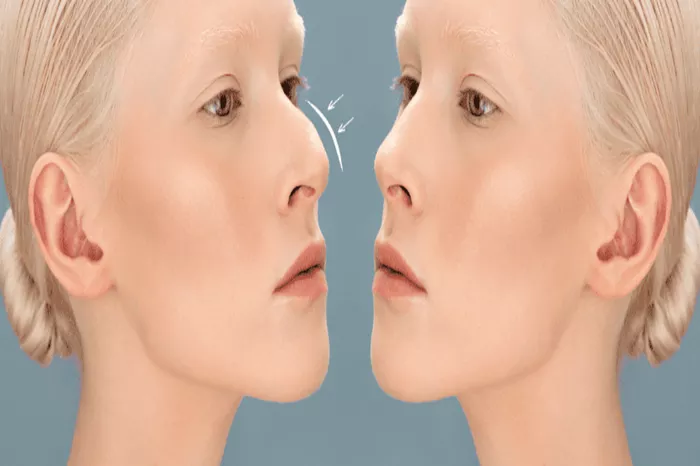Rhinoplasty, commonly known as a nose job, is a popular cosmetic surgery that can enhance facial harmony and improve nasal function. Post-surgery swelling is a common side effect. Managing this swelling is crucial for a smooth recovery and optimal results. Here are ten effective ways to reduce swelling after rhinoplasty.
1. Follow Your Surgeon’s Instructions
Strict adherence to your surgeon’s post-operative instructions is essential. These guidelines are tailored to your specific case and are designed to promote healing and minimize complications. Typically, instructions include information on medication, cleaning the surgical site, and activity restrictions.
Why It’s Important
Your surgeon understands the intricacies of your procedure. Following their advice ensures that you’re doing everything possible to aid your recovery. Ignoring these instructions can lead to increased swelling and prolong the healing process.
2. Apply Cold Compresses
Using cold compresses can significantly reduce swelling in the initial days following surgery. Apply the compress gently on the cheeks and around the eyes, avoiding direct pressure on the nose.
How to Use Cold Compresses
1.Use a soft, clean cloth or a gel pack.
2.Apply the compress for 10-15 minutes.
3.Take breaks between applications to avoid skin irritation.
Cold compresses constrict blood vessels, reducing blood flow to the area and thereby minimizing swelling and bruising.
3. Keep Your Head Elevated
Keeping your head elevated, especially during sleep, helps to reduce swelling. Use pillows to prop yourself up or consider a recliner chair for the first few nights.
Benefits of Elevation
Elevation reduces blood flow to the nose, minimizing pressure and swelling. It also helps in reducing fluid retention in the facial tissues.
4. Stay Hydrated
Drinking plenty of water is crucial for reducing swelling. Hydration helps your body flush out toxins and reduce fluid retention.
Tips for Staying Hydrated
1.Drink at least 8 glasses of water daily.
2.Avoid caffeinated and sugary beverages.
3.Incorporate hydrating foods like cucumbers and watermelon into your diet.
Proper hydration supports overall health and aids in the recovery process by reducing swelling and promoting healing.
5. Avoid Salty Foods
Salt can cause your body to retain water, leading to increased swelling. Reducing salt intake helps to manage swelling more effectively.
How to Reduce Salt Intake
1.Avoid processed and packaged foods.
2.Use herbs and spices to flavor your meals.
3.Read food labels to check for sodium content.
A low-sodium diet helps your body to maintain a balance of fluids, reducing the risk of swelling.
6. Take Prescribed Medications
Your surgeon may prescribe medications to help reduce swelling and manage pain. Ensure you take these medications as directed.
Common Medications
1.Anti-inflammatory drugs to reduce swelling.
2.Pain relievers to manage discomfort.
3.Antibiotics to prevent infection.
Following the prescribed medication regimen can significantly aid in controlling swelling and ensuring a smoother recovery.
See also: How Do They Do A Nose Job?
7. Avoid Strenuous Activities
Strenuous activities can increase blood flow to the face, exacerbating swelling. Avoid heavy lifting, vigorous exercise, and activities that strain the facial muscles.
Recommended Activities
1.Gentle walking to maintain circulation.
2.Light stretching without involving the facial muscles.
3.Resting adequately to promote healing.
Restricting strenuous activities helps to minimize swelling and reduces the risk of complications.
8. Use Arnica Montana
Arnica Montana is a homeopathic remedy known for its anti-inflammatory properties. It is often recommended to reduce swelling and bruising post-surgery.
How to Use Arnica Montana
1.Available in topical creams and oral supplements.
2.Follow the dosage instructions provided by your surgeon or pharmacist.
3.Start using Arnica Montana as soon as approved by your surgeon.
This natural remedy can be a helpful addition to your post-surgery care routine, promoting faster reduction in swelling.
9. Maintain a Healthy Diet
A balanced diet rich in vitamins and minerals supports your body’s healing processes. Certain foods can help reduce inflammation and swelling.
Nutrient-Rich Foods
1.Vitamin C-rich foods like citrus fruits and bell peppers.
2.Anti-inflammatory foods like turmeric and ginger.
3.Protein sources like lean meats, beans, and nuts.
Eating a healthy diet provides the necessary nutrients to aid in reducing swelling and supporting overall recovery.
10. Be Patient and Give It Time
Swelling is a natural part of the healing process. While it can be frustrating, patience is key to a successful recovery.
Understanding the Healing Timeline
1.Initial swelling will be most pronounced in the first few weeks.
2.Significant reduction in swelling occurs within the first month.
3.Residual swelling can persist for several months.
Conclusion
By understanding and accepting the natural timeline of healing, you can manage expectations and focus on following your post-operative care instructions.
Reducing swelling after rhinoplasty involves a combination of following medical advice, making lifestyle adjustments, and allowing your body the time it needs to heal. By incorporating these ten strategies, you can promote a smoother recovery and achieve the best possible outcome from your surgery. Always consult with your surgeon before making any changes to your post-operative care routine.
Related topics:
Top 5 Ways To Make Your Nostrils Smaller Naturally
Best 5 ways to Know If You Need A Nose Job
Are Non Surgical Nose Jobs Safe?


